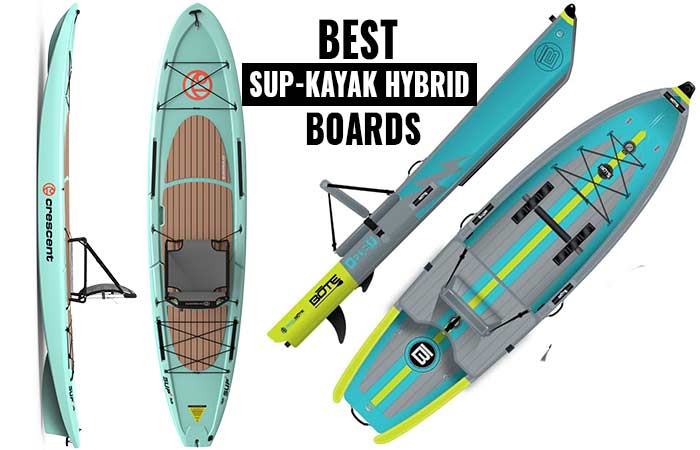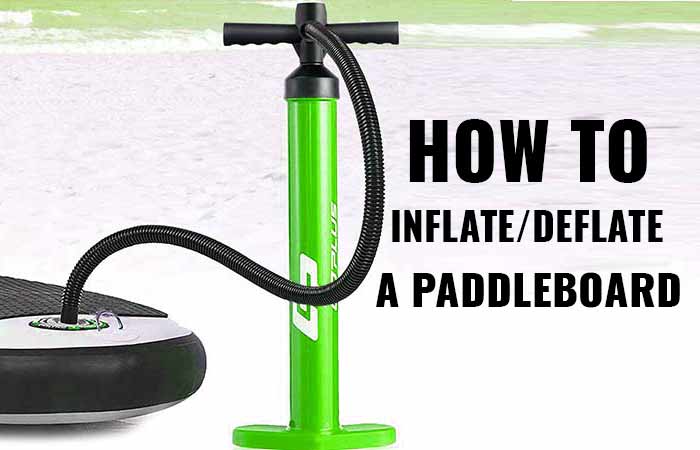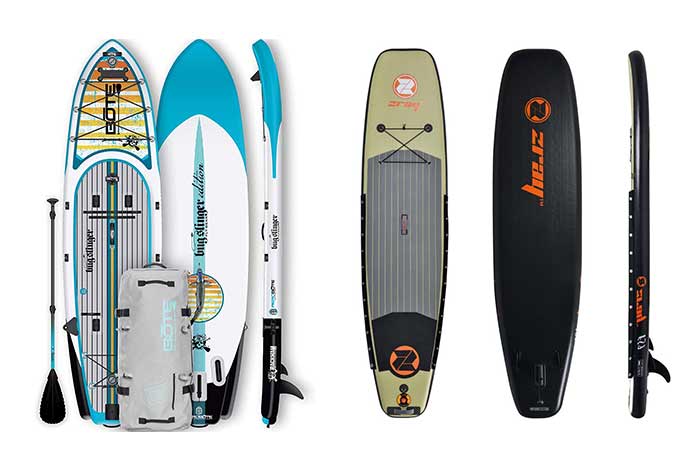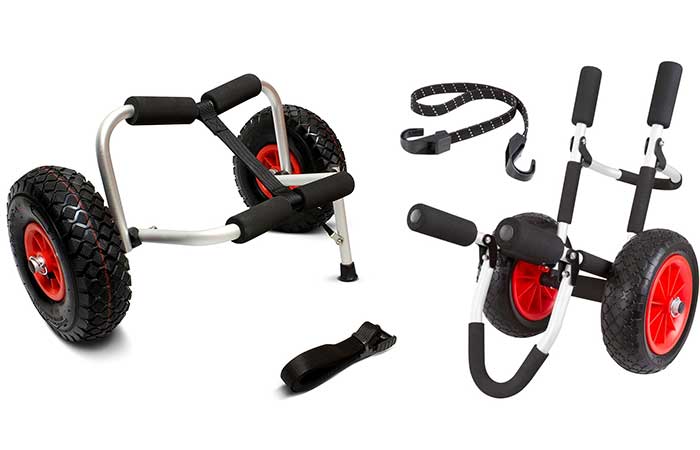How to Paddle Board-Is it Hard? Getting on SUP, Standing Up, Holding Paddle + Beginner Strokes
Paddleboarding has been around for decades. Based on statistics, it’s one of the fastest-growing aqua sport. It is easy to pick up, therefore, with the right equipment anyone can learn how to SUP quite fast. It is basically an excellent way to explore mother nature, as you also keep abreast of your health.
Herein, learn more about SUP difficulty level, how to paddle board; starting from the equipment and accessories you require, the right conditions for SUP, getting on board, standing up, holding the paddle, basic strokes plus dos and don’ts.
Is Paddle Boarding Hard or Easy?
It is not hard as long you have the right board, paddle and proper instructions. With the right board size and paddle length for your weight and height, you can learn and master basic paddleboarding techniques in a few hours or just mere minutes.
What makes this water sport easy is the fact that beginner paddle boards are purposefully sized to give starters a stable platform to stand on. All you need is to position yourself at the center to balance and just like that, you’re a step ahead!
Anyone regardless of age, body type/size, or skill level can become a SUP competent paddle boarder. In addition to being easy, SUP is fun and a low-impact fully-body workout for the old and young.
How to Paddle Board
The steps to learn SUP include
- Preparation-basic SUP equipment and understanding the right conditions
- Launching the board
- Getting on the board
- Standing up
- Balancing
- Understanding how to hold the paddle correctly
- Progressing to basic strokes and direction change
Preparation-Beginner SUP Equipment & Conditions
It’s always best to come prepared and properly geared up as a beginner. The condition of the water and surrounding area should be right.
Below is a list of the most common equipment and accessories you will need in the course of your learning.
- Stand-up paddleboard – you can’t go paddleboarding without the main component. But remember, you’re going with not just any board, there are specific boards suitable for beginners. You need to select one that fits perfectly with your height and weight. It is a good idea to start off with rental boards before purchasing your own board.
- Paddle – similar to a canoe, the oar has a teardrop shape-like blade that is used to slice the water as you maneuver the waters. You also need to choose a paddle that matches your height.
- PFD (Personal Flotation Device) -it can be a life jacket or vest. It is an optional gear used to keep you afloat when you fall into the water. Depending on your location, the coast guard may deep it necessary for you to put on a life jacket.
- Safety equipment like a whistle or light that’s used to alert other boaters or paddleboarders in case of anything.
- Clothing – you can put on a bikini or shorts but most people will opt for swimsuits, rash guards, and board shorts.
- SUP Leash/Ankle Strap-Ties your lower leg to the board to ensure that the board will stay close to you if you happen to fall or get knocked off of your board. Some boards come with leashes while others do not.
- Sun protection (sunscreen and goggles).
The best time and conditions for Paddling.
- Ensure the area does not have foreign objects, rocks or debris that may hurt you in case you fall. The objects may also damage your board.
- Opt for flat calm water locations like lakes. Calm water allows you to practice balancing on the board without being battered around by the rough water around you
- Warm waters, with a temperature of at least 80 degrees are the best for starters. Owing to the fact beginners tend to fall a lot, freezing waters won’t be a good idea.
- Days with no or minimal wind are best to learn paddling as balancing and maneuvering are easier. Avoid windy times of the day. You can go paddling in the morning or evening when the wind is light.
- Low vs high tides for SUP- Slack tides, which in most cases appear two hours before and after the highest and lowest tides, are generally the most appropriate tides for beginners. Slack tides, involve minimal water movement, allowing for an easier and safer SUP learning experience.
Mental and physical preparation
Prepare yourself mentally by visualizing yourself paddling and physically by doing light warm-up stretches
Launching the Paddleboard from Shore
You can launch your paddle board either from the shore or dock.
The most common way to launch the paddleboard especially for beginners is from the shore. Up next are the steps to follow.
- Ensure that all attachments, fins, leashes, the paddle, etc. are in place.
- Lift the board up away from you onto the rail first.
- Once the board is up on the rail, give it a side hug, grab the carry handle to lift it up.
- Use the other hand to carry the paddle into the water.
- Once in the water, about knee-deep, clear your fins of any sand or debris from shallow water.
- Place the paddle board on the water at least as deep as the fin depth (deck up and fin down)
- Ensure the leash is properly fastened the leash around your ankle
- While behind the board, gently push it forward to get a feel for how it glides on water
How to get on the Paddleboard
After launching the board, the next step is to get on the paddleboard. Here are the instructions.T
- Standing alongside the board, hold it firmly by the edges and begin to get onto the board using one knee.
- Lift yourself into the board until you’re fully on board and get into a kneeling position.
- Position yourself at the center of the board to maintain balance, otherwise, you can easily fall into the water.
- For the kneeling position, you can use your paddle to try out some basic strokes. Your hands can as well act like a paddle.
Note that the above instructions are for those who have launched the board from the shore.
How to Stand up on a paddleboard
- While on the kneeling position, ensure the board moving forward.
- Place your hands in front of you to a crawling posture
- Let one hand stay on the board surface as you hold the paddle with the other
- Bring one knee forward
- Slowly bring the other knee forward
- Tighten your core muscles then slowly start to lift your chest as to move vertically, extending your legs so you stand up
- Look straight ahead, not down or to the side
- Ensure you’re still at the center, your feet shoulder-width apart.
Staying Balanced on a SUP
Once you’re up on the board, stay at the center to keep the board from losing balance and you falling off, position your feet in a parallel position similar to your hip distance. Keep the toes pointed in the same direction – forward.
You can test your balance by slightly bending your knees and trying to swing back and forth like a surfer. Ensure your back is kept straight. Begin shifting your weight from left to right as you move your hips and look straight ahead. Once you have built some stamina, you can now start using the paddle.
How to Hold a Paddleboard Paddle
Your paddle acts like your walking stick. It is essential for balance and maneuverability. Holding the paddle the wrong way results in loss of control and inefficiency in your paddling technique.
Here is how to hold the paddle correctly;
- Hold the top of the handle with one hand
- Place the other hand about halfway down the shaft
- Angle the blade of the paddle away from you and towards the nose to move forward.
- Place the paddle blade into the water in front of your body at 45° angle
- Pull back in one smooth movement, while the blade is still in water
- Do not extend back beyond your body
- Switch sides by placing top hand directly below the hand that was halfway down
If you have an instructor around, he/she can show you how you will begin to move around with the paddle. The position of your shoulder, torso, and legs should be in a way to keep the movement steady.
Also, don’t be alarmed if you find your board moving in strange directions rather than a straight line. It is normal especially when you are starting. Once you master using the paddle correctly, you will control the direction effortlessly.
Progress to SUP Basic Strokes
In the world of paddleboarding, there are several strokes you will be introduced to. As a novice, the will learn the first three strokes as you proceed to learn two additional strokes.
Forward Stroke
As the name suggests, the stroke will propel your board forward. Here’s how you go about it;
- Insert the paddle into the water and planting it about two feet forward.
- Push the blade of the paddle all the way under the surface.
- Navigate the paddle in a backward direction through the water up until your ankles.
- Remove the paddle from the water and repeat the procedure.
As you do this stroke, maintain a straight angle from your arms to your hips. Twist from your torso rather than the entire body. Also, you need to push the paddle down with the upper hand instead of pulling with your lower arm as that only exerts more weight.
To maintain a straight line you will have to paddle with alternate hands – either side of the board. You can go about three strokes on each side to maintain balance and also keep a vertical stature for a straighter direction. The main idea is to draw a letter A in the water where you constantly switch sides.
Reverse Stroke
Next up is the reverse stroke. Most people use it to slow their pace, stop completely, or turn directions. To do the reverse stroke;
- From whichever side you were paddling, reach back behind you and plant the paddle in the water.
- Ensure it’s close to the tail as possible to cut the current you’re flowing in.
- With the blade, all the way under the surface, start to pull back. If you were on your right, you should start turning to the right and vice versa.
The reverse stroke is actually very simple compared to the other strokes.
Sweep Stroke
The final novice stroke you will learn is the sweep stroke. It can also be used to change direction especially while standing or moving in a certain direction.
- From the right side, rotate your shoulders forward.
- Plant the paddle into the water ensuring the blade is submerged all the way under.
- Sweep the paddle in an arching motion, like you’re forming a letter C.
- Start from the nose of the board to the tail as you rotate using your torso with your legs and hips as your base/ leverage. For a right sweep, you will be turning to the left and vice versa.
The sweep stroke can also be done in a reverse motion to change direction to the opposite side. You simply follow the above procedure but you live from the tail to the nose. If you advance to a racing game, you may need to leverage a back foot so you can turn directions much quicker.
Draw Stroke
A draw stroke is a winding technique used to pull up alongside a dock or used to change course. Here’s how;
- Turn your body towards the direction you intend to change to and plant the paddle in the water.
- The paddle should be parallel to your board with your shoulders and hips straight.
- Face the paddle towards the board and pull it towards you.
- Remove the blade from the water and swing it to either edge of the board – tail or nose.
This is an advanced stroke because of the need to know how to counteract the lateral movement from the tail because of the fin. You have to navigate the water with the paddle closer to the tail than the nose.
CrossBow Stroke
The final stroke is the crossbow stroke. This is one of the most efficient turns you can execute as it doesn’t change the stance of the board. For this stroke, you start by;
- Paddling from the right side while maintaining a neutral stance at the center.
- Rotate your torso towards the left to push your right shoulder forward.
- Plant the blade of the paddle on the left side with the power face facing the right.
- Rotate the torso again to the tight so you can bring the blade towards the nose of the board.
- Clear the noise area of the board with the paddle to bring it around.
- Repeat the motion until you achieve a turn.
- You may bump into the board a few times, so simply pull the paddle out, plant it back in from the direction of your torso towards the direction you want to turn to.
SUP Beginner Dos & Don’ts
As we wind up, let’s have a look at what you should do and should not do as you begin your paddleboard journey.
- Learn your environment first hand. As a novice, you haven’t yet learned how to navigate the water while it’s rocking and the wind is blowing hard. Hence, settle for subtle waters like a pond or lake with little to no obstacles.
- Launching is also better from the shore rather than a dock.
- A sunny day is always a better day. Do not go when it is windy
- Do NOT go on your own. Do go along with someone – a friend, companion, or instructor.
FAQS
What is the Point of Paddle Boarding?
Paddleboarding had been around for over a decade a and for most people, they will consider it as a recreational activity more than a workout routine. Hence, many will indulge in this watersports just for the leisure of it as you get to enjoy a fresh breeze of air, the warm sun, and picturesque views of mother nature.
Is Paddle Boarding a Good Workout?
Yes, paddleboarding offers excellent workouts that can burn you over 800 calories if you’re doing it right. It’s a very complete and full body work out that will exercise even the smallest muscle from your head to the toes, with precision to the core, shoulders, and leg muscles.
SUP offers you more than just cardio workouts, from improved balance and stamina to great mental health, and other psychological benefits.
How do I Launch a Paddle Board from a Dock?
The dock usually has a rather sharp entrance as compared to the shore or the white sandy beach. The water level is most probably deeper than knee length hence it’s not recommended that you stand alongside as there’s nothing you’re going to step on. The following are the steps to follow.Steps
- Put your stand up paddleboard inside the water from the dock area by setting the nose of the board into the water. You should not try to dive into the water as it can be dangerous especially for a beginner.
- Put on your leash the hold the back end of the boat – tail, and gradually lower the board into the water.
- Put your paddle in position
- Sit on the edge of the dock with your feet on the board close to the carrying handle or center.
- Rotate your torso/ hips as your hands hold onto the edges of the dock while your lower body is still on the board.
- Lower your weight and get into a kneeling position at the board center.
- You should be on your fours now, push yourself away from the dock.
- You can maintain the kneeling position or stand up following the above instructions
Following is a video showing how to launch and dismount to paddle board to a dock.
Further SUP Ideas & How-tos
The following is a collection of more Stand up paddleboarding ideas and board guides
Paddleboarding
- What to Wear for Stand Up Paddleboarding?
- SUP Paddleboarding Tips Every Paddleboarder should know
- How to Get on a Paddle Board, After Falling & from a Dock
- How many Calories does Paddleboarding Burn?
- Best Paddle Board Workouts/Exercises to Improve Your Fitness
- Benefits of Paddleboarding(SUP)
SUP Equipment & Accessories
- Best SUPs for Bigs Guys
- Best Bamboo Paddle Boards
- Best SUP-Kayak Hybrid Boards
- Best Fishing SUPs
- Best Pumps for Inflatable Stand Up Paddleboards(ISUPS)
- What Size Paddle Board Do I Need?
- Types of Stand Up Paddleboards
- Inflatable vs Solid/Rigid Paddleboards
- How Long Do Inflatable Paddle Boards Last?
- How to Store SUPs






